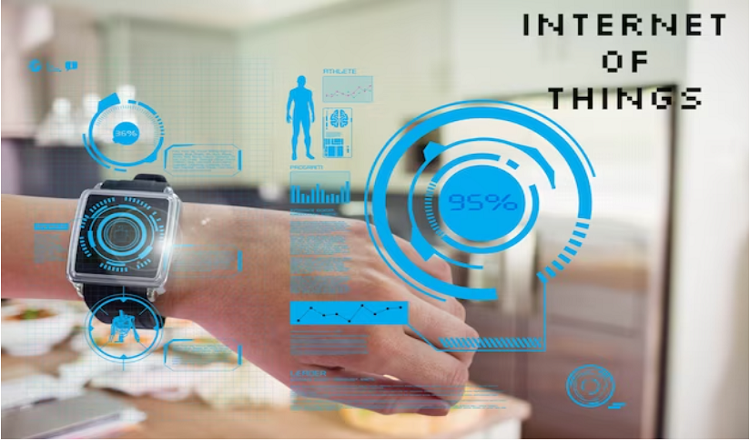In recent years, smart homes have become increasingly popular as a way to make our lives more convenient, efficient, and comfortable. However, the integration of robotics into smart homes takes things to a whole new level. From cleaning robots to security robots to entertainment robots, these devices offer a range of benefits that go beyond what traditional smart home devices can provide. In this article, we’ll explore the world of robotics in smart homes and connected devices, examining the benefits, challenges, case studies, and future developments of this exciting and rapidly-evolving field.
First, let’s define what we mean by “robotics” and “smart homes”. Robotics refers to the branch of technology that deals with the design, construction, operation, and use of robots. A robot is a machine that is capable of carrying out a complex series of actions automatically, especially by being programmed by a computer. Smart homes, on the other hand, are homes that are equipped with technology that can be controlled remotely or automated to perform certain tasks. This can include everything from smart thermostats and lighting systems to home security cameras and voice-activated assistants like Amazon Echo or Google Home.
The integration of robotics into smart homes and connected devices has the potential to revolutionize the way we live, work, and play. With robots performing tasks that were once reserved for humans, we can free up our time and energy for more important things. But as with any emerging technology, there are also challenges to overcome. In the following sections, we’ll explore the benefits and challenges of robotics in smart homes, as well as some successful case studies and future developments in the field. So sit back, relax, and get ready to enter the world of robotics in smart homes and connected devices!
Benefits of Robotics Integration
One of the key benefits of integrating robotics into smart homes and connected devices is the increased convenience and comfort that it provides. With robots performing tasks such as cleaning, cooking, and even providing entertainment, homeowners can enjoy a more relaxing and stress-free lifestyle. Additionally, robotics integration can enhance security and safety, with robots providing surveillance, monitoring, and alarm systems to protect the home and its occupants.
Energy efficiency and cost savings are also major benefits of robotics integration. With robots programmed to optimize energy usage and reduce waste, homeowners can save money on their energy bills and reduce their carbon footprint. Finally, customization and personalization are key benefits of robotics integration, as homeowners can tailor the technology to their specific needs and preferences. With so many benefits to offer, it’s no wonder that the integration of robotics into smart homes and connected devices is becoming increasingly popular among tech-savvy homeowners
Types of Robotic Devices for Smart Homes
When it comes to the types of robotic devices for smart homes, there is a wide range of options available. One of the most popular types is cleaning robots, which include robotic vacuums and mops that can efficiently clean floors without any human intervention. Security robots are also gaining popularity, with devices such as robotic cameras and patrol robots providing a 24/7 surveillance system to keep the home and its occupants safe.
Entertainment robots, such as robotic pets or personal assistants, offer a fun and interactive way to enjoy technology in the home. Health and wellness robots are designed to help people with their physical and mental wellbeing, with devices such as robotic exoskeletons or therapy robots that can aid in rehabilitation or provide emotional support. Finally, cooking and food preparation robots are a convenient and time-saving way to prepare meals, with devices such as robotic chefs or automated kitchens that can create gourmet meals at the push of a button. With so many types of robotic devices for smart homes, there’s sure to be a device to suit every homeowner’s needs and preferences.
Integration Challenges
While the integration of robotics into smart homes and connected devices has many benefits, there are also several challenges that must be overcome. One of the major challenges is compatibility and interoperability issues, as there are many different types of devices and protocols used in the smart home industry, which can lead to compatibility problems between different devices.
Cost and affordability are also challenges that must be addressed, as the cost of robotic devices can be prohibitively expensive for many homeowners. Additionally, data privacy and security concerns must be addressed, as the collection and transmission of sensitive data by these devices can create potential security vulnerabilities. To fully realize the potential of robotics integration in smart homes, these challenges must be addressed and overcome, allowing for a more seamless and secure integration of these devices into our daily lives
Successful Integration Case Studies
Successful integration case studies can provide valuable insight into how robotics can be effectively integrated into smart homes and connected devices. Amazon Echo and Alexa, for example, have become ubiquitous in many households, offering voice-activated control of many devices and systems in the home. The Roomba vacuum cleaning robot has also been a major success, offering hands-free cleaning of floors and carpets.
The Nest smart thermostat has been another successful integration, providing intuitive and efficient climate control that can save homeowners money on their energy bills. Smart locks and doorbells have also become increasingly popular, with devices such as the August Smart Lock and the Ring Video Doorbell providing convenient and secure access to the home. Finally, the LG Homebot is an advanced cleaning robot that can navigate and clean even the most complex home environments, providing a high level of automation and convenience. These successful integration case studies demonstrate the many benefits of robotics integration in smart homes, and provide valuable examples for future development and innovation
Future of Robotics in Smart Homes
The future of robotics in smart homes is promising, with many exciting developments on the horizon. Advancements in AI and machine learning are opening up new possibilities for robotics integration, allowing for more intuitive and responsive devices that can learn and adapt to the needs of the home and its occupants. Increased interconnectivity and interoperability will also play a major role, allowing for more seamless integration of different devices and systems in the home.
The emergence of new robotic devices, such as advanced healthcare and personal assistant robots, will also expand the scope of robotics integration in smart homes. There will be a greater focus on energy efficiency and sustainability, with robots programmed to optimize energy usage and reduce waste. However, the impacts on the job market and workforce will also need to be considered, as more tasks become automated and new jobs are created to support the development and maintenance of these devices. Overall, the future of robotics in smart homes is a bright and exciting one, with many opportunities for innovation and advancement.
Conclusion
In conclusion, the integration of robotics into smart homes and connected devices is a rapidly growing field with many exciting possibilities. From cleaning robots to personal assistants, these devices offer increased convenience, comfort, security, and energy efficiency, while also presenting challenges such as compatibility, cost, and data privacy.
Looking to the future, advancements in AI and machine learning, increased interconnectivity and interoperability, and the emergence of new robotic devices will continue to expand the scope and potential of robotics integration in smart homes. However, it is important to also consider the impacts on the job market and workforce as more tasks become automated.
As a call to action, readers are encouraged to explore further resources and stay up-to-date on the latest developments in the field of robotics integration in smart homes. Whether it is through attending conferences, following industry leaders and publications, or experimenting with new technologies in their own homes, there are many ways to get involved and contribute to the continued growth and success of this exciting field.




